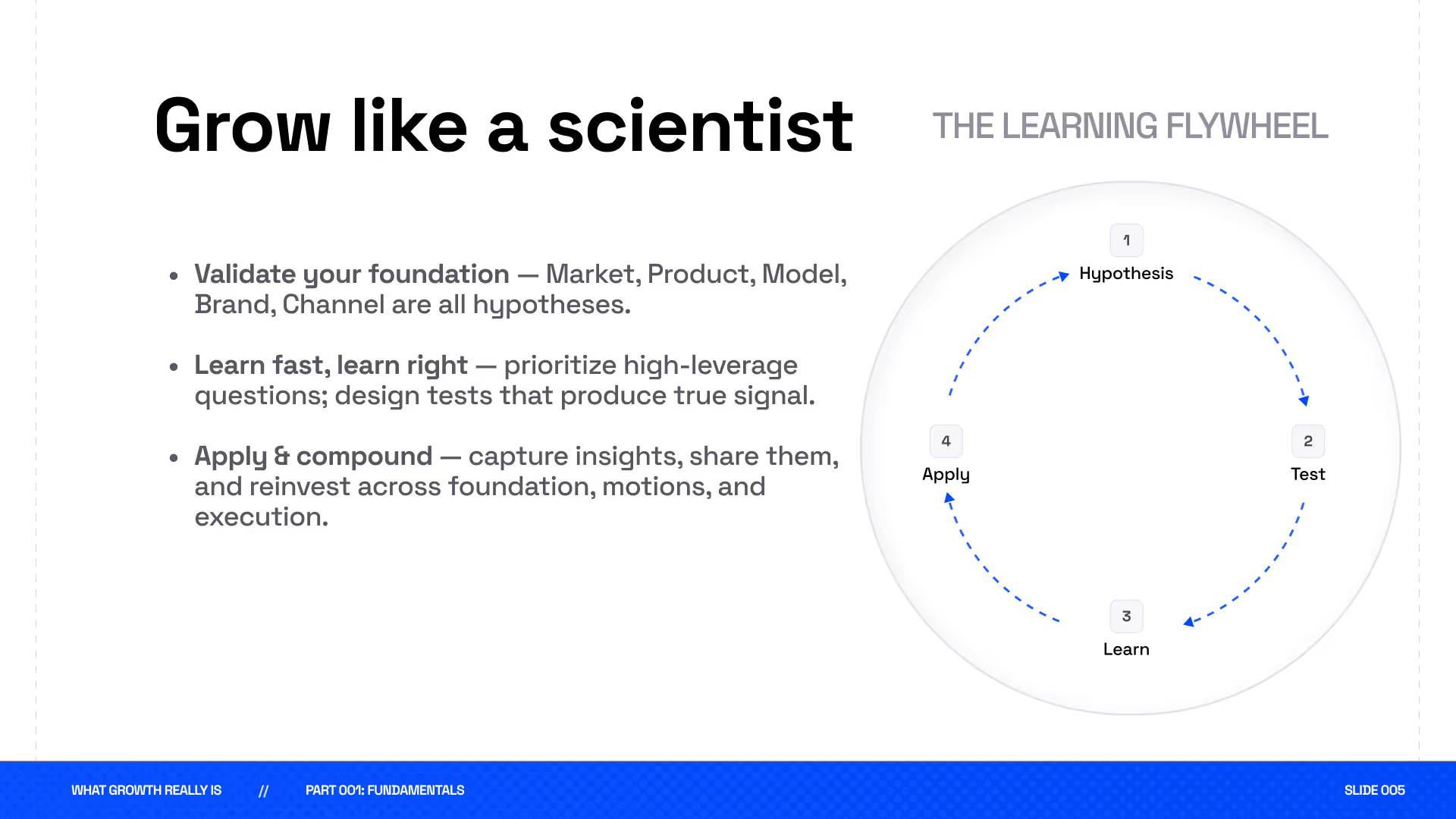
Conversation

🥳 Feedback Received!
Thanks for taking a moment to share your thoughts — it genuinely helps us make each chapter sharper.
What happens next:
- Your feedback goes straight to our product team.
- We’ll use it to refine lessons, clarify examples, and make the program even more useful.
Appreciate you helping make this program better for everyone.
Ready for your next challenge? 👇
Grow like a scientist
So the next key lesson is understanding that growth is largely fueled by learning, and we capture those learnings through experimentation.
Why is learning so critical to growth?
At the highest level, it is because our entire business is a hypothesis.
An entire business, especially a startup, is simply a collection of assumptions, with certain assumptions being riskier than others. And, like any other field where we must validate hypotheses, the scientific method (yes, the one you learned as a kid) will be key.
Growth plays a huge role at the startup stage in identifying our riskiest assumptions and proving or disproving them through experimentation.
The Foundational Five = Assumptions
Even our Foundational Five — they are all assumptions:
- We are assuming that the model we’ve created is a fit for our market.
- We are assuming the product we’ve built is a fit for our market.
- We’re assuming that the channel we’ve identified is the optimal way to acquire new customers.
They are all assumptions that we are attempting to validate.

Learning Fuels Discovery
Beyond validating assumptions, learnings also fuel discovery.
Let’s revisit the flywheel concept discussed in the DC Growth System.
It isn’t enough to simply identify a promising flywheel and assume it will run on its own. A flywheel is just a system. To get real leverage from it, you need to learn how that system actually works inside your business. Where to apply force, what inputs matter most, and how to remove friction so it compounds.
This is why the best teams treat learning itself as leverage.
Every experiment clarifies how to better design, tune, and ultimately master the flywheels and other components that power their engine.
Learning Fuels the Tactical Layer
And, of course, learning also fuels the tactical layer of our growth system.
While tactical execution alone doesn’t guarantee growth, it’s a massive amplifier if our foundational alignment is strong.
Those “secret” Meta and SEO tactics we talked about in the last lesson… those are discovered, in large part, thanks to our experimentation process.
The Scientific Method (with a Twist)
Now, one last thing: the scientific method provides the framework for how we generate the learnings we’re seeking.
But. And it’s a big but. We are not actual scientists. We are (probably) not making drugs for patients.
The precision that we need, especially at the startup stage, is enormously lower than in an academic or medical setting. We need directional signals. And that means we do not want, nor do we need, to A/B test every decision we make. More broadly, even if we wanted to, it’s just not possible. We don’t have enough data.
And I bring this up because we see a lot of founders, when first introduced to the concept of experimentation and testing, fixate on precision. i.e. A/B testing everything under the sun.
Do. Not. Do. This.
Experimentation takes many forms:
Simply talking to a user is an experiment. Showing a handful of people a mock-up is an experiment. Sure, the learnings we derive will be less reliable than putting thousands of people through a formal A/B test. But it’s also better than no learnings at all.
An important skill within growth experimentation is understanding how to map the scope of your experiments to the significance of the decision you’re trying to make.
What’s Next
We’ll go way deeper in our experimentation deep dive later in the program, by the way.
But for now, let’s move on to the next guiding principle.


